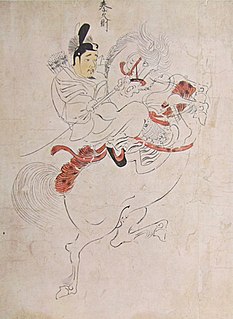 W
WThe Borough Group was a collective of mid-20th-century artists from the Borough area of Southwark, South London, England. The group was associated with David Bomberg, who was then teaching a number of the artists that formed the group at the Borough Polytechnic, hence the name.
 W
WThe Cranbrook Colony was a group of artists who settled in Cranbrook, Kent from 1853 onwards and were inspired by seventeenth-century Dutch and Flemish painters. They have been referred to as 'genre' painters as they tended to paint scenes of the everyday life that they saw around them in the rural area of Kent where they lived, typically scenes of domestic life; cooking and washing, children playing and other family activities.
 W
WCosmic Extensionalism or Cosmic X is a new style of Art which was originally founded by Jack Armstrong in 1999. Armstrong was inspired by an ethereal experience he had with the famous gem stone known as the Black Star Sapphire of Queensland. The stone is believed to have magical powers. At the time he destroyed all of his previous works.
 W
WThe Delft School is a category of mid-17th-century Dutch Golden Age painting named after its main base, Delft. It is best known for genre painting: images of domestic life, views of households, church interiors, courtyards, squares and the streets of that city. Carel Fabritius and Nicolaes Maes are seen as the originators of these localised specialties in the 1640s that were continued in the 1650s by Pieter de Hooch and Johannes Vermeer. Vermeer is the most famous of these painters today. The architectural interiors of Gerard Houckgeest, Emanuel de Witte and Hendrick Cornelisz. van Vliet are also notable contributions. Besides the genres most closely associated with Delft painters, artists in the city continued to produce still life and history paintings, portraits for patrons and the court, and decorative pieces of art that reflect more general tendencies in Dutch art of the period.
 W
WGaur was a Basque artistic group founded in 1966 by Amable Arias, Rafael Ruiz Balerdi, Nestor Basterretxea, Eduardo Chillida, Remigio Mendiburu, Jorge Oteiza, José Antonio Sistiaga, and José Luis Zumeta. The avant-garde group, based in Gipuzkoa, Spain, provided the springboard for a wide Basque artistic movement with close links to influential social, cultural and political agents in the Basque Country opposed to Franco's dictatorship during the 70s and early 80s.
 W
WGjernes is a contemporary style of fine art; sculptural and decorative. It is a spreading popular style of art, especially in Scandinavia, because the Norwegian Government's wedding gift to Princess Märtha Louise of Norway and her husband Ari Behn was two pieces of furniture work by Liv Mildrid Gjernes.
 W
WThe Hoosier Group was a group of Indiana Impressionist painters working in the late 19th and early 20th centuries. Artists considered members of the Group include T. C. Steele, Richard Gruelle, William Forsyth, J. Ottis Adams, and Otto Stark. Together they are primarily known for their renditions of the Indiana landscape. Although the members of the group had disparate backgrounds and training, the Group gained its cohesion from the determination of the five to attend art school in Munich in the late 1880s. Following their return to Indiana, the group dominated the Indiana art scene through the 1920s. Forsyth, Steele, and Adams taught art at academies in the state and helped spread the group's ethos. Hoosier Group artists all exhibited regularly in the state for several decades thereafter and were instrumental in forming the Society of Western Artists.
 W
WKapists or KPists, also known as the Colourists, were a group of Polish painters of the 1930s who dominated the Polish artistic landscape of the epoch. Contrary to Polish romanticist traditions, the Kapists underlined the independence of art from any historical tradition, symbolism or influences of literature and history. They were formed around Józef Pankiewicz and were under strong influence of the French Post-Impressionists.
 W
WThe kurbits is an invented, fantastical symbol of vegetal fertility based on a gourd or pumpkin of biblical legend, principally used for ornamentation in Swedish folk art and on painted furniture and domestic objects. Very popular between 1720 and 1870, particularly in Dalarna and southern Norrland, the paintings and murals have mostly biblical motifs, such as "The Triumphant Entry of the Queen of Sheba Into Jerusalem", and the people and buildings depicted are as was locally fashionable at the time of painting. They were done by itinerant painters, mainly from Dalarna, who specialized in the style and whose signatures are to be found in many localities.
 W
WLuminism is a late-impressionist or neo-impressionist style in painting which devotes great attention to light effects.
 W
WNikuhitsu-ga (肉筆画) is a form of Japanese painting in the ukiyo-e art style. The woodblock prints of this genre have become so famous in the West as to become almost synonymous with the term "ukiyo-e", but most ukiyo-e artists were painters as well as printmakers, with much the same style and subjects. Some turned to painting at the end of a career in prints, while some, like Miyagawa Chōshun and a number of the artists of the Kaigetsudō school, never made prints and only worked in paintings.
 W
WNise-e (似絵), or "likeness pictures," were a style of portraiture popular in the court circles of Japan's Kamakura period. Prior to the 12th century Japanese art was purely religious in character, but nise-e introduced the realistic depiction of lay figures such as courtiers and samurai. The popularity of nise-e even helped to end the taboo against artistic depictions of the emperor, with one of earliest nise-e to depict a living emperor being a portrait of Emperor Hanazono by Gōshin. The aim of a nise-e portrait was to capture a man's character with a few simple lines; and the work served as a veneration of his accomplishments.
 W
WPlakatstil, also known as Sachplakat, was an early style of poster art that originated in Germany in the 1900s. It was started by Lucian Bernhard of Berlin in 1906. The common characteristics of this style are bold eye-catching lettering with flat colors. Shapes and objects are simplified, and the composition focuses on a central object. Plakatstil turned away from the complexity of Art Nouveau and propagated a more modern outlook on poster art. Famous Plakatstil artists include Ludwig Hohlwein, Edmund Edel, Ernst Deutsch-Dryden, Hans Lindenstadt, Julius Klinger, Julius Gipkens, Paul Scheurich, Karl Schulpig and Hans Rudi Erdt. A later master of the Sachplakat was Otto Baumberger.
 W
WThe return to order was a European art movement that followed the First World War, rejecting the extreme avant-garde art of the years up to 1918 and taking its inspiration from traditional art instead. The movement was a reaction to the war. Cubism was partially abandoned even by its co-creator Picasso. Futurism, which had praised machinery, dynamism, violence and war, was rejected by most of its adherents. The return to order was associated with a revival of classicism and realistic painting.
 W
WThe Rivelin Valley artists were a group of professional and amateur landscape artists in the early 1920s, based in the Rivelin Valley, Sheffield. The most prominent was Robert Scott-Temple. Others were William WE Goodrich, Ben Baines, Charles Edwin Dyson, Vernon Edwards and Charles Pigott.
 W
WSynthetic Impressionism is style of painting that combines the carefully observed color and expressive paint handling of impressionist painters with the abstraction of space and multiple exaggerated viewpoints of cubist painters. The forerunners of this style include Van Gogh, Cézanne, and Chaim Soutine.
 W
WTubism is a term coined by the art critic Louis Vauxcelles in 1911 to describe the style of French artist Fernand Léger. Meant as derision, the term was inspired by Léger's idiosyncratic version of Cubism, in which he emphasized cylindrical shapes. The style was developed by Léger in his paintings of 1909–1919, such as Nudes in the Forest (1909–10) and Soldiers Playing Cards (1917).
 W
WUniversal Flowering is the name given by Pavel Filonov to his system of analytical art. The system arose from cubo-futurist experiments and works that he undertook from 1913-1915. It is characterized by very dense, minutely facetted, and relatively flat surfaces created by working from the particular to the general, using the smallest of brushes and the sharpest of pencils. The images have both Cubism's multiple vantage points and Futurism's representation of a figure over time. A number of the paintings, while having a given orientation, are painted as though they could be oriented in a variety of ways. Filonov's philosophy was originally formalized in written form in 1915, which was revised and published as The Declaration of Universal Flowering in 1923 when Filonov was a professor at the (then) Petrograd Academy of Arts. Filonov's main theoretical work The Ideology of Analytical Art was published in 1930.
 W
WThe Zhe School (浙派) was a school of painters and was part of the Northern School, which thrived during the Ming dynasty. The school was led by Dai Jin, traditionally considered its founder. The "Zhe" of the name refers to Dai Jin's home province - Zhejiang. The school was not a school in the proper sense of the word in that the painters did not formulate a new distinctive style, preferring instead to further the style of the Southern Song, specializing in decorative and large paintings. Instead the school was identified by the formal, academic and conservative outlook, being a revival in the early Ming Dynasty of the Ma-Xia, 'academic', style of painting landscapes of the Southern Song.